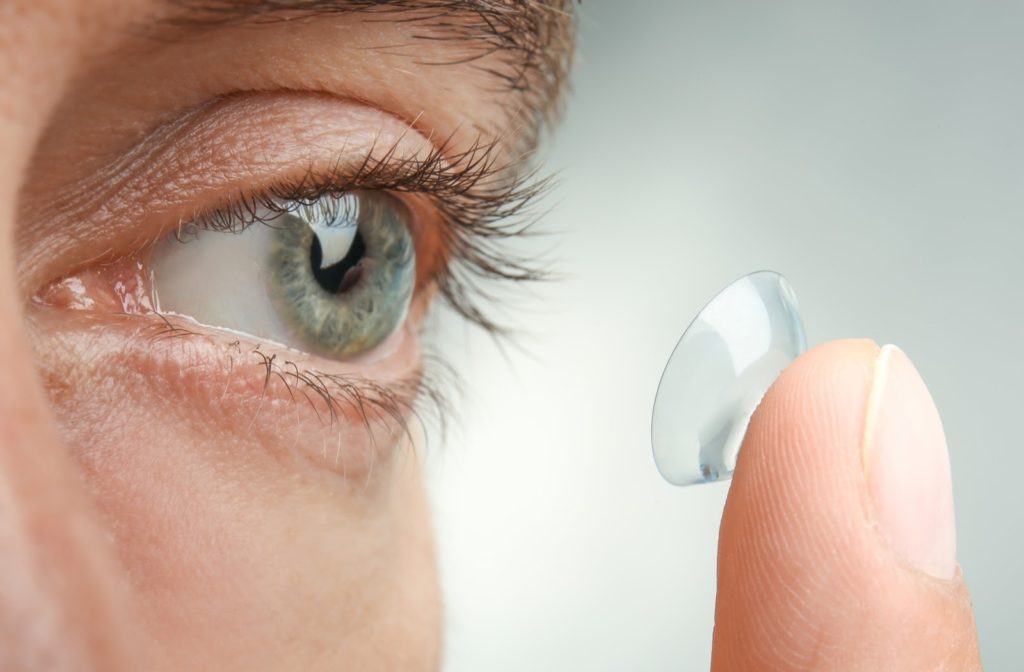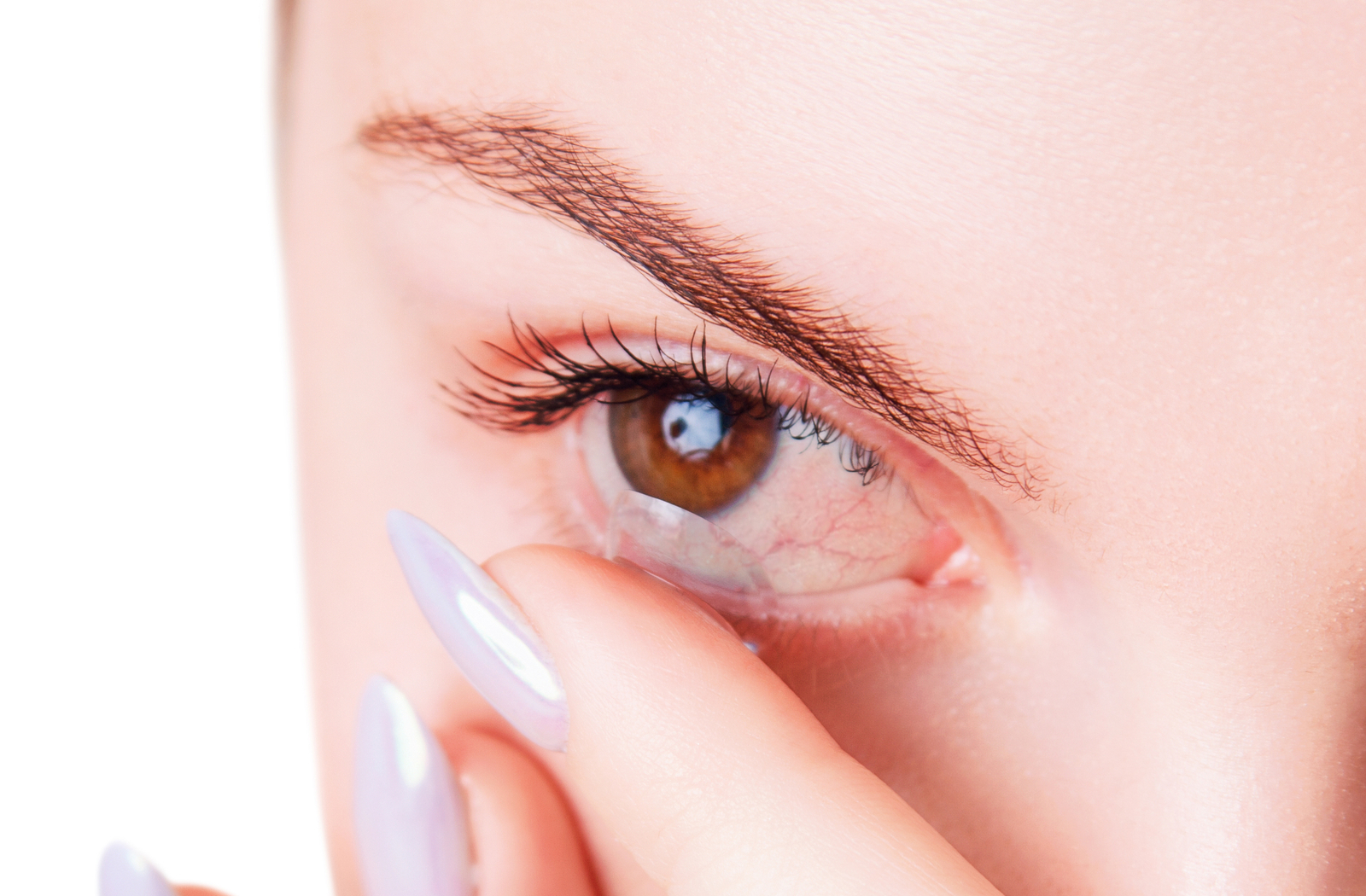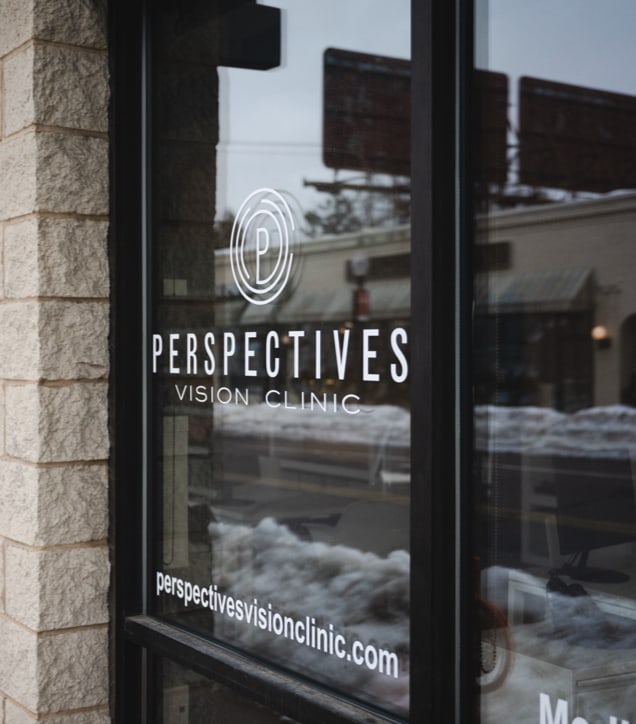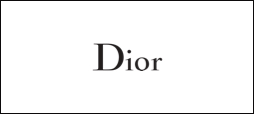If you’re looking for some extra flexibility in your eyewear choices or have simply grown tired of wearing the same pair of frames day-to-day, contact lenses may provide the solutions you’re looking for!
However, if you’re one of the millions of Americans currently struggling with dry eye symptoms, you might be a little worried about how contact lenses could affect your eye comfort. We completely understand the concern, but we’re here to tell you that many people with dry eye can also wear contact lenses comfortably.
It all comes down to how severe your dry eye symptoms are, how you wear and take care of your contact lenses, and the type of contact lenses you use. While there is a possibility that dry eye could outright prevent you from wearing contact lenses, our team is here to help you find solutions that suit your needs and lifestyle.
If you need help managing dry eye or are interested in how contact lenses can serve your vision, be sure to book an appointment with our team at Perspectives Vision Clinic today.
Let’s Look At Dry Eye
To kick us off, let’s take a look at dry eye and how it affects your eye comfort.
There are 2 different types of dry eye (evaporative dry eye and aqueous tear deficiency), and both of them affect a part of your eye called the tear film. Your tear film covers the entire surface of your eyes and uses 3 specific ingredients to help maintain your eye comfort:
- Mucus, which is responsible for adhering your tear film evenly across the eye.
- Water, which is responsible for hydrating your eyes and washing away particles.
- Oil, which seals in your tear film and prevents it from evaporating.
Evaporative dry eye, the most common, affects the oil content of your tears and leads to faster evaporation. Aqueous tear deficiency affects your tear’s water content, preventing your eyes from feeling adequately hydrated.
Can Contacts Affect Your Eye Comfort?
While many people can enjoy a comfortable contact lens experience, it’s important to know that they can also cause discomfort and irritation in specific situations. However, these symptoms are often linked to poor lens care techniques and practices.
Properly fitted contact lenses should help lower the risk of causing or contributing to eye discomfort, but you could still experience symptoms if:
- You wear your contacts for too long
- You’re not cleaning your contacts properly
- Your contact lens is too large or too small for your eyes
- Your lenses don’t have enough water content
Our comprehensive contact lens exam and fitting consider everything that could affect your eye comfort to help us prescribe lenses that are right for you and your needs.

Managing Your Eye Comfort While Wearing Contacts
When you’re prescribed your first set of contacts, we’ll go over everything you need to know about cleaning and managing them.
Even if you don’t struggle with dry eye symptoms, taking care of your lenses can make a significant difference in the comfort they provide. Some instructions include:
- Regularly switching your contacts for a new pair.
- Using only recommended lens cleaners (never water or saliva).
- Using eye drops throughout the day.
- Washing your hands before and after putting in your contacts.
- Cleaning your lens case.
Contact Lens for Dry Eye
Dry eye shouldn’t be a barrier blocking you from achieving clear, comfortable vision, even if you want to wear contact lenses.
Advancements in contact lens technology have helped them become more available than ever before—even for people struggling with dry eye.
If you’re wondering if these contacts could help you achieve comfort and clarity, be sure to get in touch with us. We’ll be happy to help find, fit, and prescribe contact lenses suitable for your needs.
Soft Contacts
Soft contacts are among the most common types of lenses optometrists can prescribe and are one of the most comfortable.
If you have dry eye, we may recommend 1-day contact lenses to help prevent protein deposits from developing on your lens.
Rigid Gas-Permeables
Rigid gas-permeable (RGP) lenses are also quite popular with contact lens wearers. Although these lenses are made from harder materials than soft contact lenses, they do let oxygen pass through and reach your eye surface, which could help you manage dry eye symptoms.
Some people may prefer an RGP lens over a soft contact depending on their vision and lifestyle. RGP lenses have a reputation for providing crisper vision than soft contacts and being easier to handle and clean.
Scleral Lenses
If you have struggled with dry eye, there is a chance you may have heard of scleral contacts. If not, that’s okay! Scleral lenses are exploding in popularity because of their ability to address various corneal health issues like keratoconus as well as dry eye symptoms.
Scleral lenses have a larger diameter than traditional contact lenses, which allows them to rest on the sclera (whites) of your eyes. Because of their size, the center of the lens vaults over the cornea and creates a small tear reservoir between the lens and your eye. The reservoir can help comfort and stabilize your tear film.










